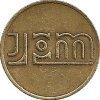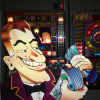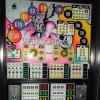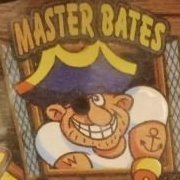Leaderboard
-
[[Template core/front/popular/memberRow is throwing an error. This theme may be out of date. Run the support tool in the AdminCP to restore the default theme.]]
[[Template core/front/popular/memberRow is throwing an error. This theme may be out of date. Run the support tool in the AdminCP to restore the default theme.]]
[[Template core/front/popular/memberRow is throwing an error. This theme may be out of date. Run the support tool in the AdminCP to restore the default theme.]]
[[Template core/front/popular/memberRow is throwing an error. This theme may be out of date. Run the support tool in the AdminCP to restore the default theme.]]
Popular Content
Showing content with the highest reputation on 06/13/19 in all areas
-
Continuing my recollections ( stop me if I'm boring you ) The Ace building in Ferry Road was a fairly dilapidated old warehouse unit that had cracked brickwork but was nicely white painted with of course a large JPM sign. A huge concrete ceiling some 20 foot high in the main assembly area and no insulation to the walls in those days ensured that in the winter it was freezing. Offices and development were on the first floor accessible by a concrete stair case or for the prototype machines, a hoist and a steel floor with chains, no cage, HSE what's that?. The stores and the cabinet shop were across a large potholed access road that went no where except to the weed covered red brick wall that was the boundary of the Gas Board wall and the huge gasometers that supplied some parts of Cardiff and dwarfed the factory. Stacked on shelves behind the 6 assembly workers were the parts to be fitted to the cabinets and in front of them scraps of domestic carpeting were a protection from the cold floor in front of the assembly runners. Empty machines were brought in on sack trucks and set on plywood bases to be pushed down the floor level roller line. Graham, Tommy, Howard, Gareth B, Gareth G, Gary (common name in Wales yew see, init,) used pneumatic drills, screw drivers and nut runners to install the components necessary for the build and they all raced with their guns screaming to see who could finish their machine first. From the end of the line machines were again sack trucked into the test compound which was delineated by a low stud wall topped with a green plastic coated chicken wire, this to make sure that no one could get in unless they were trained as the earthing was protected, the machine having to be earth tested separately. My first job was to build (reel units) flashers which I found both daunting and interesting if a little repetitive but soon, chasing my own build count made me want to better the build environment. Given a colleague to work with we finished our efforts quite early in the week so rather than pass them on to the Flasher Test area, I offered to learn and was introduced to the Schematics and so we combined the build and test which just made common sense to me. Finding work to do was easy as we were getting more and more successful by the week and demarcation lines were thin. One of the tasks we could help with was producing the Schematics from the master copies. To make the large scale AO circuit diagrams or schematics that made up the only diagnostic guide sent with the machine we had a master that was made by Howard Parker drawn full scale on a transparent plastic like material. This was then placed on a special sheet of ‘blue print’ or photo sensitive paper and both were put into the rollers of a diazotype printing machine. This machine used neat ammonia as part of the 'developing' medium and the paper being photo sensitive bleached with the blinding light produced, but only where the master was blank. When blueprint paper is exposed to uv light through the machine a positive image is "burned" onto the blueprint paper from the original. After this occurs, the paper is then exposed to ammonia gas which fixes the lines or the print which turn blue. The problem was that the Ammonia had to be fresh and transferring it form a bottle to the machine ended in the room filling with ammonia fumes, the process itself producing even more fumes. Again HSE? I seemed to understand the schematics quite readily so I was keen to learn how to test the rest of the machine and started hanging around the test area where the relay covered control units with their various rotary control timers were being tested or perhaps exercised is a more fitting description. This was done on huge test rigs covered in lamps and switches which were in reality simply a machine without the cabinet. Helping with this, and testing the reel units introduced me of course to the concept of fault finding using the schematics which stood me in good stead as time went by. Regards, Frank Bird .......... To be continued ..........9 points
-
No problem Frank, it's getting sorted and will pin your thread too so it won't drop down the listings and members can easily access. Regard's, Ron.2 points
-
A question that is asked quite often actually. The J was Jack Jones MD, the P actually two P's were Alan and Howard Parker both development directors, the M was John Monks, purchasing director. Laterly there was another director Ernie Beaver, Sales director however they decided not to change the name of the company as it was already recognized. Regards, Frank Bird2 points
-
Hello well first of all let me start by saying I never realized how much interest there was in the product and the industries that I enjoyed as a younger man. As much as the industry was interesting and fun to be in, the company JPM, was something very special. Considering the company as we knew it ceased to exist many years ago, most of the individuals that enjoyed working together, and playing hard together, are still in contact with each other. Several people on this forum have suggested that stories about the early days might be interesting so I have decided to attempt to write some humorous lines about those days and the product. This is obviously from my point of view and so it's in a way autobiographical, but I started on the production line, went through to the test department, moved on to development, migrated to customer services promoted to customer service manager, was asked to take over development, was part of the Marketing team and then project managed the new SWP so I guess mine is a particularly wide view. If this seems self indulgent or self promoting it's not meant to be so be honest and re-direct me if I drift off subject. I still work, I enjoy working with a bunch of geeks, lunatics, and research amongst other things renewable energies, water purification and believe it or not mobile phones and beer brewing, however that's another subject altogether. Strangely, at least six of us used to work in the gaming industry, no one else from JPM, they are not that old 🤔 however several from Astra games which obviously I had a big hand in setting up. I'll gather some facts together and come back with more pertinent information. Regards Frank Bird .......... Continued ..........1 point
-
1 point
-
1 point
-
Yeah, I’m loving them. A great time to be in the industry.1 point
-
I'm sure everyone is loving these old memories so keep with it. Thanks Bob1 point
-
1 point
-
Can pull my machine out and take close up photos of the reels if that's what you mean? Will be tomorrow though as I'm in work today. Not sure how to take hi-res on my phone.1 point
-
I can't wait to hear your JPM experiences from that era Frank, I worked and operated with an independent company after leaving BF and Indeed it was Colin Taylor at CTL that tempted me away. As he was a distributer for many manufactures in the 70s I think JPM was his favourite as 80% of the brand new machines sent up to the new North East operation from his Leicester base were JPM. For the clubs to start it was Super Chance and Money Multiplier but AWPs were varied, a few names in similar around the same time you might recognise Mr Nudge, Target Four, The Hit, The Joker. I can see why Colin sent so many Super Chances up here too.😁1 point
-
A question that is asked quite often actually. The J was Jack Jones MD, the P actually two P's were Alan and Howard Parker both development directors, the M was John Monks, purchasing director. Laterly there was another director Ernie Beaver, Sales director however they decided not to change the name of the company as it was already recognized. Regards, Frank Bird1 point
-
A question that is asked quite often actually. The J was Jack Jones MD, the P actually two P's were Alan and Howard Parker both development directors, the M was John Monks, purchasing director. Laterly there was another director Ernie Beaver, Sales director however they decided not to change the name of the company as it was already recognized. Regards, Frank Bird1 point
-
Hi, I'm a MAME dev. I can here because I'm looking for manuals for the mpu3 and mpu4 machines. I'm from the US so I've never seen a MPU machine, but some of my MAME changes have touched the MPU and broke stuff.1 point
-
1 point
-
In JPM production Assembly we always soaked reel unit, leather clutch washers in neatsfoot overnight. Regards, Frank Bird.1 point
-
Ron hi, could you move my posts here please, apologies if it's a hassle. I think this is where I belong...😉 Regards, Frank Bird.1 point
-
1 point
-
Thanks for the offer Darren you're a star! I'll hold out for the RC manual it's more just to go with it once it's finished. Cheers bud1 point
-
1974, My first days at JPM I was shown how to put together the component parts of the "flasher assembly" or the "reel unit" that carries the symbols that you see spinning when you press the start button. What some of you newer (MPU?) guys may not know is that it's final resting position actually enabled the win by allowing an electric current to flow through the unseen pairs of contacts that were 'wiped' over by a pair of conductive brushes or wipers not unlike the underneath of a scalextric car (remember those). This was the complete randomness of the machine, their was no percentage controller, no way to inhibit wins. When 240v mains current was used (god forbid) the circuits actually used to arc or flash hence the 'Flasher' description. In previous days the electrical rotary switch, for that is what it is, was used extensively in machines such as the “Bally Bingo” and due to the unhealthy atmosphere (in those days) in pubs and arcades the contacts used to quickly get gummed up with fluff, grease and tobacco grime. Folk lore has it that one enterprising engineer who was particularly fed up with cleaning the grease out with a cloth thought it would be a great idea to use a little petrol soaked tooth brush to clean the contacts which on the face of it might seems an entirely plausible endeavour. Unfortunately the confined area he was in concentrated the fumes and he didn't notice the build up so when he powered up the mains and the machine started up, the flashers did just that, and well the rest can be imagined. I guess Fireball is a good name for a machine? Don't be under any illusion that JPM was always the well oiled machine it turned out to be. It all started in a garage in Porthcawl in about 1972 although the guys had been 'busy' converting machines to the new decimal coinage.The new coin values didn't exactly fit with the percentage values that had been used to create the products and the minor changes or botches that were used to make the machine 'fit' the percentage often screwed up game play. One trick was to inhibit the machine's ability to stop on a winning line, this was done buy either filling in the cog on the reel unit that allowed the solenoid brake to drop, or connecting a feed from the preceding contact on the wiped surface which kept the solenoid active long enough to let the jackpot pass.In any case the guys realised that by making their own glasses, changing the reel bands, rewiring the flasher and re-programming the rotary timers the machine could be revamped and game play enhanced, hence the Conversion kit market was started although they took in a machine and revamped it over night, while still keeping their day jobs. It didn't take long before they found a manufacturer to make cabinets and buying old broken machines they cannibalized parts to build new ones eventually buying all new parts. From their to the old ACE Coin building in Ferry Road, Cardiff took quite a short period of time and the wobbly foundations of the company were laid. Regards Frank Bird ............ Continued. ...........1 point
-
Welcome Frank cant wait to here the stories from the greatest era of machines and thanks for helping to create the games that emptied my pockets on regular occasions but always kept me coming back for more cheers tony. PS Dont suppose you've a stash of them system 5 boards lying around Lol Nice find rich up there with the best mate1 point








